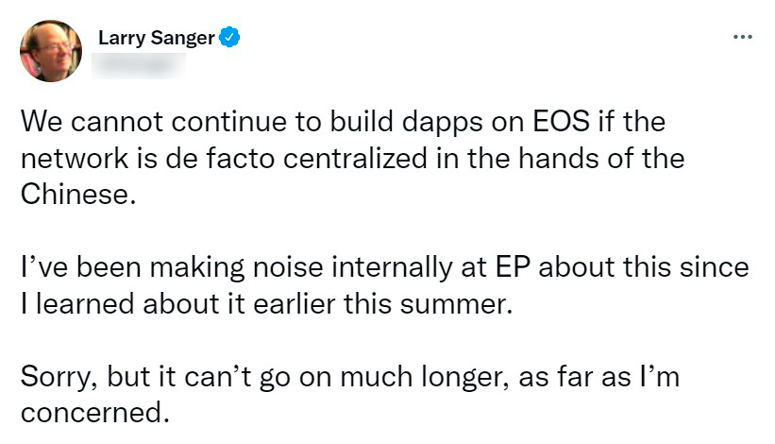A feature of blockchain technology and digital coins is the absence of a governing body. Due to this, cryptocurrencies are opposed to banks, payment services and other custodial financial institutions. But practice has shown that a distributed ledger can be either public or private. And centralized cryptocurrency, whose issuance, distribution and burning depend on the decisions of a limited number of individuals or even a single company, exists. However, there are no clear official delineations, so attempts to attribute a coin to a specific type are subjective.
The concept of centralization
Banks, popular payment platforms PayPal, PAYEER, AdvCash are custodial structures with a single governing body. They form the basis of the traditional financial system. Centralization implies that a limited number of participants influence changes in the rules and principles of work.
Although dozens of blockchain projects claim that there is no single governance, it is often not all participants who control the protocol. The coins of such protocols are only pseudo-decentralized.
How governance is implemented:
- The software is controlled by a limited number of investors. Decisions to make changes to the code are made by a single individual. This is because the blockchain project is funded by organizations that become the largest holders. And they act in their own interests. Even Bitcoin, the flagship of the market, is criticized for centralization. It financially supports organizations, in particular Blockstream. Decentralized projects have found a solution. In response to Bitcoin, the Decred network was launched, which includes a voting system. All holders have the same powers. Ethereum Classic, Dash have created a treasury that receives a portion of the commissions for using the network. Holders themselves decide how to distribute them, so the influence of external large investors is reduced.
- Centralization of the coin mining process. This is relevant for networks operating on the PoW algorithm. The complexity of block mining is increasing, so mining on GPUs often becomes unprofitable – expensive ASIC devices are required. The main power is concentrated in a few participants. Moreover, mining pools do not solve the problems. Thus, 6 largest pools control about 70% of Bitcoin hashrate: Foundry USA (16.49%), F2Pool (15.37%), AntPool (14.1%).

- Creator Influence. Most blockchains have a founding company behind them. It is often given between 10 and 50% of the coins as part of the initial distribution. This already gives it privileges in the context of managing the protocol. But it often also plays a role in the fact that holders are guided by the statements and comments of the leading developers of the project. Thus, a cult of personality is formed. A vivid example is Vitalik Buterin, who created Ethereum.
- The voting system is not fully formed. The way to decentralization is to transfer control to holders. While many blockchains implement such a strategy, they leave loopholes in the process: for example, they establish that you need a large number of koins to vote. Therefore, the dominant role is once again left to large holders. In the situation with the Ethereum hardfork, when the decision was made to return the funds stolen by the DAO hacker, the developers limited the voting time to 12 hours. So thousands of holders didn’t even know about it, but by default supported the network branching. In fact, only 6% of community members actually voted.
- Trust in centralized services. The majority of crypto investors, when they want to conduct a transaction, do not independently check the validity of the entire chain. This often requires either expensive equipment or a lot of time. Therefore, they use centralized services such as MyEtherWallet and trust information from Explorer (Blockchain, Etherscan and others). This approach is similar to the situation when an investor trusts his own bank, which ruins the principle of decentralization.
What cryptocurrency can be considered centralized
The creators of some tokens and coins do not deny that the project is managed by specific companies. For example, 3 centralized cryptocurrencies dominate the market of stablecoins, which are tied to fiat.
5020 $
bonus for new users!
ByBit provides convenient and safe conditions for cryptocurrency trading, offers low commissions, high level of liquidity and modern tools for market analysis. It supports spot and leveraged trading, and helps beginners and professional traders with an intuitive interface and tutorials.
Earn a 100 $ bonus
for new users!
The largest crypto exchange where you can quickly and safely start your journey in the world of cryptocurrencies. The platform offers hundreds of popular assets, low commissions and advanced tools for trading and investing. Easy registration, high speed of transactions and reliable protection of funds make Binance a great choice for traders of any level!
| Name | Description |
|---|---|
| USDT | Issued by Tether. It accounts for about 61% of transactions in the overall market. This koin was ranked as the #3 crypto coin in February 2022. It has a centralized vault for reserves that serve as collateral. |
| USDC | Circle is the issuer. This stablecoin accounts for 22% of transactions. |
| BUSD | Created by the Binance exchange in collaboration with Paxos. The crypto coin accounts for 9% of all transactions. |
The issuance, storage and burning of the top steiblcoins are centralized. Theoretically, this carries risks for holders, because as with banks, a user’s account can be blocked.
Tether has already frozen savings at the request of law enforcement.
There are projects that insist on their decentralization, although many cryptoinvestors are convinced of the opposite. The coin Ripple is the most frequently criticized. Lead developer Jack McCaleb left the project in 2013 due to the high centralization of the network, as well as its focus on corporations, banking structures and custodial payment services. To offer users an alternative, he launched another crypto coin, Stellar. Arguments for Ripple’s lack of decentralization:
- The project is run by a private company. And initially all the coins belonged to Ripple Labs, then they were distributed among employees, not among independent investors. At the beginning of 2022, Ripple Labs owns about 55% of all native koins.
- The number of validators is strictly limited and they are approved by the founding company. In February 2022, only 34 trusted nodes were active, and 6 of them belonged to Ripple Labs.
- Until 2013, even the project’s code was completely closed.
Another criticized crypto coin is EOS. The principle of the network is based on the fact that only 21 validators are engaged in data storage, block generation and execution of smart contracts. This ensures high throughput and fast transactions, but reduces decentralization.
Given the high reward for block generation, the validators selected in EOS are interested in staying in their “positions”. This leads to alliances where some node validators vote for others by agreement. A similar problem has arisen in the Lisk network.
Statements from famous personalities about EOS:
- American entrepreneur Brock Pierce commented that the project’s ecosystem is like an oligarchy from China.
- Larry Sanger, co-founder of Wikipedia and director of Everipedia, which is built on blockchain, does not recommend running DApps on the network because, according to him, it is de facto centralized and wholly owned by the Chinese.

Summary
Decentralization is one of the most important issues developers tackle when launching a network. The term “blockchain trilemma” has even been introduced: how to achieve high scalability and throughput without transferring management rights to a limited number of individuals. In fact, each blockchain project has a different degree of decentralization. And in most cases, it is impossible to talk about achieving 100%.
Centralized cryptocurrency is beneficial to financial institutions, as it is more easily accepted by custodial payment services. And it often suits even investors, because such networks show higher throughput. On the other hand, they contradict the basic philosophy of the crypto world – decentralization. In addition, since third parties are involved, such coins are less reliable and safe.
Frequently Asked Questions
❓ Which coins position themselves as the most decentralized?
Ethereum Classis, Decred, Stellar, and Shiba.
⛔ Are blockchains always decentralized?
No, according to international classifications, there are 3 types: open, consortium and private. The latter 2 have a governing body, privileged participants, and access to some or all of the information may be closed to the majority.
❔ Which blockchains are fully centralized?
Monax Platform and MultiChain.
❗ Is Bitcoin the benchmark for decentralization?
Theoretically anyone can start a node, but the hardware requirements are high, as is the competition. The threshold for entry is high. This leads to an oligopoly, where multiple pools own most of the hashrate.
✅ Will Ethereum’s transition to version 2.0. affect centralization?
Yes. There will be a complete transition to PoS. In early 2022, when PoW was still used, most of the hashrate was shared by 5 pools, resulting in high centralization.
Is there an error in the text? Highlight it with your mouse and press Ctrl + Enter
Author: Saifedean Ammous, an expert in cryptocurrency economics.















